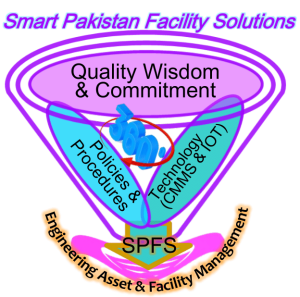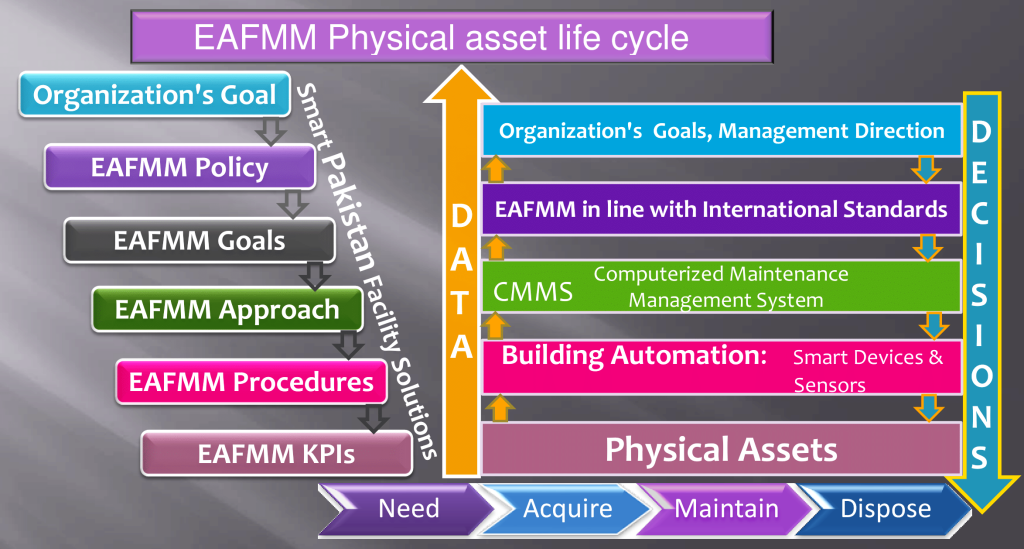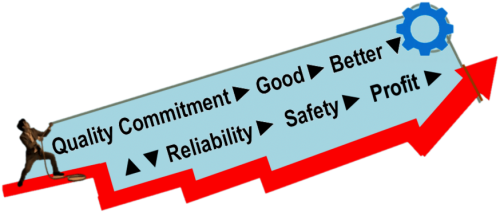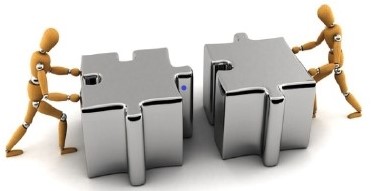Is the Engineering Assets & Facility Maintenance Management System (EAFMM) Beneficial or not?
In this discussion, we aim to explore whether the Engineering Assets & Facility Maintenance Management System (EAFMM) is beneficial or not, for industrial, commercial, or healthcare facilities.
Adopting any quality standard and its documentation is often a challenging task. However, once implemented, it starts exploring the benefits in multiple ways.
This is the first part of our discussion, focusing on the structure of EAFMM.
Utilization of the Potential of Physical Asset Management:
After human resources, physical assets are the most important resources of any organization. They have a significant impact on service delivery, business objectives, and financial performance:
- Poorly managed assets can negatively affect the entire business.
- Well-managed assets become a fundamental component of value creation.
Despite their importance, many organizations take their physical assets for granted. Instead of maximizing their potential to deliver business value, they simply “maintain” them. This not only represents lost opportunities but also poor management of stakeholder interests. A well-structured Engineering Assets & Facility Maintenance Management System can help address these issues.
What is the Engineering Assets & Facility Maintenance Management System (EAFMM)?
EAFMM is often an unseen field. Its primary objective is to ensure that facilities, buildings, and services operate safely, economically, and efficiently, maintaining their expected performance with maximum uptime.
Millions of people work in this field worldwide, yet their contributions often go unnoticed. Service seekers usually take it for granted, failing to appreciate the hard work that ensures everything runs efficiently and safely.
EAFMM typically involves managing lighting, air conditioning controls, waste management, cleaning, safety, security, and other facility operations. However, with the rise of industrialization and automation, the increasing complexity of machines and equipment has led to the emergence of a separate discipline—Physical Asset Management.
Over the past few decades, rapid technological advancements have necessitated advanced management techniques and expertise to keep up with evolving industry demands.
Components of a Good EAFMM System
A well-structured EAFMM system consists of two primary components:

- Management System:
This refers to the set of functions and organizational components that establish policies and procedures to achieve business goals. It aligns with the organization’s vision and mission and supports strategic planning.
A robust management system often incorporates international standards such as ISO 55000, ISO 41000, or other globally recognized principles. These standards enhance reliability, continuity, and safety, ensuring that present and future challenges, risks, and opportunities are effectively addressed in compliance with regulations.
This system covers the entire asset lifecycle, from need identification to disposal or up gradation.
- Technology Systems:
Technology plays a crucial role in modern asset and facility management. Some key technology-driven systems include:
- Building Automation System (BAS) / Building Management System (BMS): These systems automate and control building operations and physical assets to optimize efficiency for occupants and businesses. They also enable remote monitoring and control.
- Computerized Maintenance Management System (CMMS): Medium to Large organizations often manage hundreds of assets, making manual tracking inefficiently.
- A CMMS helps by streamlining preventive maintenance, planning, and interrelated activities, ensuring cost-effective asset management.
Integration of Management and Technology Systems:
International standards like ISO 55000 and ISO 41000 provide the foundation for effective asset management. Once this foundation is established, organizations can integrate information systems to collect, monitor, store, analyze, and report asset management data.
A well-integrated asset management framework consists of two layers of technology:
- The Upper Layer – CMMS or Enterprise Asset Management (EAM) software, which serves as the main repository for asset data.
- The Lower Layer – Industrial IoT (IIoT) devices and applications such as SCADA, BAS, and other systems that feed real-time data into CMMS/EAM.
The Power of Integration
While management systems and technology systems serve different functions, they complement each other in achieving the same objective from different perspectives:
When combined, they create a unified, efficient, and value-driven asset management system. Processes generate data, and technology delivers it—both are essential for success.
An internationally recognized asset management system ensures alignment between organizational goals and facility operations.
Business Benefits of ISO 55001, ISO 41001, or Other Proven Asset Management Systems:
Implementing a structured asset management system offers numerous benefits, including:
✅ Disciplined Practices & Long-Term Planning – Encourages effective decision-making and structured change management.
✅ Stakeholder Assurance – Demonstrates to customers, employees, regulators, and investors that assets are effectively managed.
✅ Consistent & Sustainable Performance – Ensures that asset objectives are achieved reliably over time.
✅ Improved Customer Satisfaction – Enhances performance, reputation, and service delivery.
✅ Better Risk Management & Compliance – Strengthens HSE performance, corporate governance, and regulatory compliance, leaving a clear audit trail.

Conclusion:
This concludes Part 1 of our discussion on the structure of Engineering Assets & Facility Maintenance Management Systems.
In Part 2, we will delve deeper into Computerized Maintenance Management Systems (CMMS) and their role in modern facility management.
For further practical insights, please refer to the video link provided below.



Your writing is not only informative but also incredibly inspiring. You have a knack for sparking curiosity and encouraging critical thinking. Thank you for being such a positive influence!